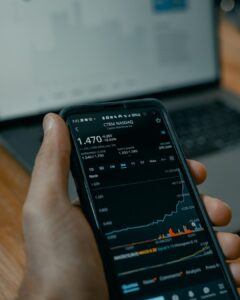Title: Top 5 Must-Have Indicators for Successful Forex Trading
Introduction:
Forex trading, also known as foreign exchange trading, involves the buying and selling of currencies with the aim of making a profit. It is a highly volatile and dynamic market, requiring traders to have a deep understanding of various indicators that can assist in making informed trading decisions. In this article, we will discuss the top five must-have indicators for successful forex trading.
1. Moving Average (MA):
Moving Average is one of the most widely used indicators in forex trading. It helps to identify the overall trend of a currency pair by smoothing out price fluctuations. MA calculates the average closing price over a specific period, and the trader can choose the desired time frame based on their trading strategy. The most commonly used time frames are 50-day, 100-day, and 200-day moving averages. When the price is above the MA, it indicates an uptrend, while a price below the MA suggests a downtrend. Traders often use the crossover of multiple MAs to identify potential buy or sell signals.
2. Relative Strength Index (RSI):
The Relative Strength Index is a momentum oscillator that measures the speed and change of price movements. RSI ranges from 0 to 100, with readings above 70 indicating overbought conditions and readings below 30 indicating oversold conditions. Traders use RSI to identify potential trend reversals and generate buy or sell signals. For instance, if the RSI is above 70, it suggests that the currency pair is overbought, and a trader might consider selling. Conversely, if the RSI is below 30, it suggests that the currency pair is oversold, and a trader might consider buying.
3. Bollinger Bands:
Bollinger Bands consist of a simple moving average (SMA) and two standard deviations plotted above and below the SMA. These bands help traders identify volatility and potential price reversals. When the price touches or moves outside the upper band, it indicates overbought conditions, while touching or moving outside the lower band suggests oversold conditions. Traders often look for price breakouts or bounces from the bands to generate trading signals. Additionally, when the bands contract, it indicates low volatility, while widening bands suggest increased volatility.
4. Fibonacci Retracement:
Fibonacci Retracement is a technical analysis tool based on the Fibonacci sequence, a mathematical pattern that appears in various natural phenomena. Traders use Fibonacci retracement levels to identify potential support and resistance levels where price reversals may occur. The most commonly used Fibonacci levels are 38.2%, 50%, and 61.8%. When a currency pair is in an uptrend, traders look for potential support levels to buy, while in a downtrend, they look for potential resistance levels to sell. Fibonacci retracement levels can be combined with other indicators to enhance trading decisions.
5. MACD (Moving Average Convergence Divergence):
MACD is a trend-following momentum indicator that helps traders identify potential trend reversals, generate buy or sell signals, and measure the strength of a trend. It consists of two lines: the MACD line, which is the difference between two moving averages, and the signal line, which is a smoothed moving average of the MACD line. When the MACD line crosses above the signal line, it generates a bullish signal, indicating a potential buying opportunity. Conversely, when the MACD line crosses below the signal line, it generates a bearish signal, suggesting a potential selling opportunity.
Conclusion:
Successful forex trading requires a combination of technical analysis tools and indicators. The top five must-have indicators discussed in this article – Moving Average, Relative Strength Index, Bollinger Bands, Fibonacci Retracement, and MACD – can assist traders in identifying trends, generating buy or sell signals, and managing risk. It is important for traders to understand the strengths and limitations of each indicator and to combine them with other analysis techniques to make informed trading decisions.





